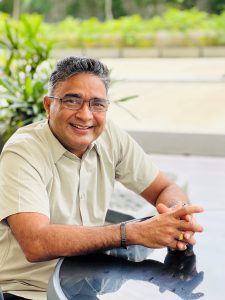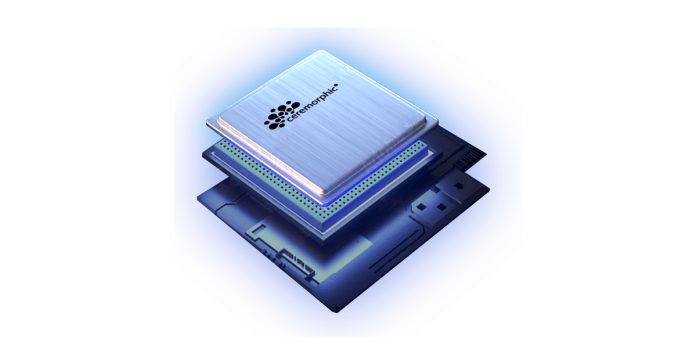Ceremorphic is doing great business and quality development in the areas of supercomputing, datacentre, life sciences, automotive, robotics, and metaverse processing. As the world moves towards a highly advanced computing era, Ceremorphic is leading many channels in developing high-tech computing and engineering systems. Their technical excellence covers a vast portfolio including multi-thread processors, security processing, machine learning processors, analog computing, reliable circuits, 3D interconnects, graph neural processing, programmable logic, and low-power memory.

Rashi Bajpai, Sub-Editor at ELE Times interacted with Dr. Venkat Mattela, Founder & CEO, of Ceremorphic about the company’s vision and technical competence, and also touched upon topics of Make in India and ESG norms.
This is an excerpt from the conversation.
ELE Times: Please throw some light on Ceremorphic’s recent development of the ultra-low power supercomputer chip built in TSMC 5nm.
Venkat Mattela: Designing products with optimal energy consumption is a challenge we foresee for the semiconductor industry for the next few decades especially with the advent of carbon neutrality mandates. As supercomputing innovations burgeon and data centers consume ever more energy, within a decade they will consume a significant part of the total energy generation in the world. This was the catalyst behind our mission to design chips with ultra-low energy consumption. Our breakthrough innovation is not just in advanced nodes like 5nm and 3nm, but we are also broadening our reach to other paradigms to minimize task workloads alongside semiconductor technology optimizations. Having taped out our 5nm chip in October 2022 and validated key technologies for our upcoming 3nm device, we’re proud of how far we’ve come in addressing these challenges. Equipped with advanced features like multi-thread processing and custom connectivity interfaces, our chips cater to modern applications’ rigorous demands, from AI model training to drug discovery. We’re excited to continue pushing the boundaries of technology and remain committed to creating solutions that make a meaningful impact.
ELE Times: In the latest development under the “Make in India” policy, India is set to begin manufacturing equipment for semiconductor manufacturing. In this regard, what in your view, are India’s major contributions to the semiconductor industry besides cutting-edge R&D? Also help us understand the challenges with physical manufacturing.
Venkat Mattela: In addition to cutting-edge R&D, India’s contributions to the semiconductor industry extend across various domains, showcasing the nation’s growing significance in this field. Firstly, India serves as a hub for semiconductor design and engineering services, with numerous companies specializing in chip design, verification, and testing. These capabilities play a crucial role in the global semiconductor supply chain, contributing to the development of innovative semiconductor products.
We also boast a robust ecosystem for semiconductor software development, encompassing tools and platforms for chip design, simulation, and optimization. This is complemented by our vast pool of skilled engineers and technologists that form a rich talent pool sought after by semiconductor companies worldwide. Moreover, initiatives like the Skill India program aim to enhance the employability of Indian youth in high-growth sectors such as semiconductors, fostering a skilled workforce for the industry’s future needs.
However, despite these contributions, India faces several challenges in physical manufacturing. One key challenge is the need for robust infrastructure and logistical support. Semiconductor fabrication facilities require state-of-the-art equipment, cleanroom environments, and reliable power and water supply, which may be lacking in certain regions.
Additionally, establishing a consistent supply chain for raw materials, chemicals, and equipment components is crucial to reduce reliance on imported materials and prevent disruptions. To scale up manufacturing, it is crucial to present ourselves as an ideal candidate for manufacturing thereby attracting investments in research, infrastructure, and workforce development.
While initiatives like the “Make in India” policy aim to do this, sustained efforts are needed to overcome regulatory barriers, attract foreign investment, and push for innovation-driven growth in the sector.
ELE Times: What potential collaborations can be explored between the renewable energy sector and semiconductor fabrication plants to establish ESG norms and sustainable practices in manufacturing?
Venkat Mattela: Renewable energy should not be viewed as merely an option, but rather as a standard practice across all industries. Given the semiconductor industry’s substantial energy consumption, it is crucial for us to take the lead in adopting renewable energy sources. Collaborations between the renewable energy sector and semiconductor fabrication plants play a pivotal role in establishing robust ESG norms and sustainable manufacturing practices.
By integrating renewable energy sources such as solar, wind, and hydroelectric power into semiconductor fabrication plants we can significantly reduce carbon emissions and environmental impact. Research and development efforts aimed at enhancing energy efficiency in semiconductor fabrication, such as advanced cooling systems, energy-efficient equipment, and optimized manufacturing processes, can yield significant environmental benefits while also improving operational efficiency and cost-effectiveness. Additionally, encouraging partnerships between renewable energy providers and semiconductor companies can facilitate the development of innovative solutions for energy storage and management. Technologies like battery storage systems and smart grid integration enable semiconductor facilities to store excess renewable energy and optimize its usage based on demand, thereby maximizing energy efficiency and grid stability. By leveraging renewable energy sources, emphasizing innovation, and promoting sustainability across the supply chain, we can contribute to a more environmentally conscious and socially responsible semiconductor industry.
ELE Times: What would be your insights and recommendations for the policymakers navigating the challenges of establishing India as a semiconductor hub?
Venkat Mattela: We are making significant strides in positioning India as a global R&D hub, thanks to our supportive policies and initiatives that prioritize top-tier institutions and foster innovation, particularly in AI. However, transitioning into a semiconductor manufacturing hub requires additional effort and time. A crucial starting point would be to build a semiconductor manufacturing facility, which is doable and requires very dedicated engineering leadership to action. Fortunately, the current government’s policies are highly encouraging and provide India an ideal path to make substantial progress in this direction within the coming decade.
ELE Times: Looking at Ceremorphic’s technology portfolio, help us understand its role in addressing the crucial needs of the high-performance computing era.
Venkat Mattela: Generative AI has played a critical role in enabling various technological applications to efficiently adopt Artificial Intelligence (AI) and supercomputing is the catalyst in training these AI models. At Ceremorphic, we embarked on this journey six years ago with a primary objective of developing ultra-low-energy, low-power supercomputing solutions. While few companies prioritized low-energy supercomputing at the time, it has now become an industry standard. With a portfolio boasting over 200 patented core technologies in this field, we have certainly has played a part in driving this shift. Our efforts in advancing low-energy supercomputing have had far-reaching implications, especially in the life sciences and pharmaceutical space.
We recently introduced our new platform, BioCompDiscoverX, which promises to revolutionize drug development by significantly accelerating the process, reducing costs, and enhancing efficacy. Furthermore, reiterating our commitment to high-performance computing in an energy-efficient manner, our upcoming chip will be manufactured using TSMC’s cutting-edge 3nm node.
ELE Times: What extra efforts and measures are necessary on the grassroots level to further elevate and enhance skill development across various sectors and emerging technologies?
Venkat Mattela: Progress at the grassroot level hinges on the coming together of supportive policies and robust funding infrastructures. As we enter a pivotal decade of innovation, we are witnessing promising advancements in these areas within India. Positioned in our golden era, we have the privilege of seizing numerous opportunities to leave a significant impact on the upcoming technological era.
Advanced universities are already leading the way by implementing specialized curriculums tailored to new technologies. But, to ensure widespread skill development, we must distil key learnings and core concepts and integrate them into the lower education levels to establish a solid foundation for future generations. This approach must go beyond theoretical knowledge and touch upon practical demonstrations of concepts. By encouraging innovation ideation from an early stage, we can sustainably cultivate a culture of creativity that will propel us to the forefront of every emerging technology.








